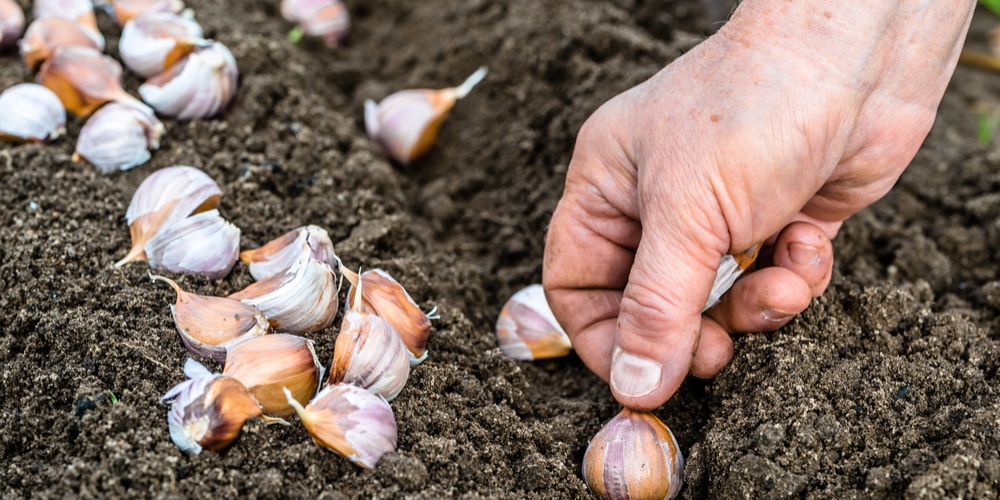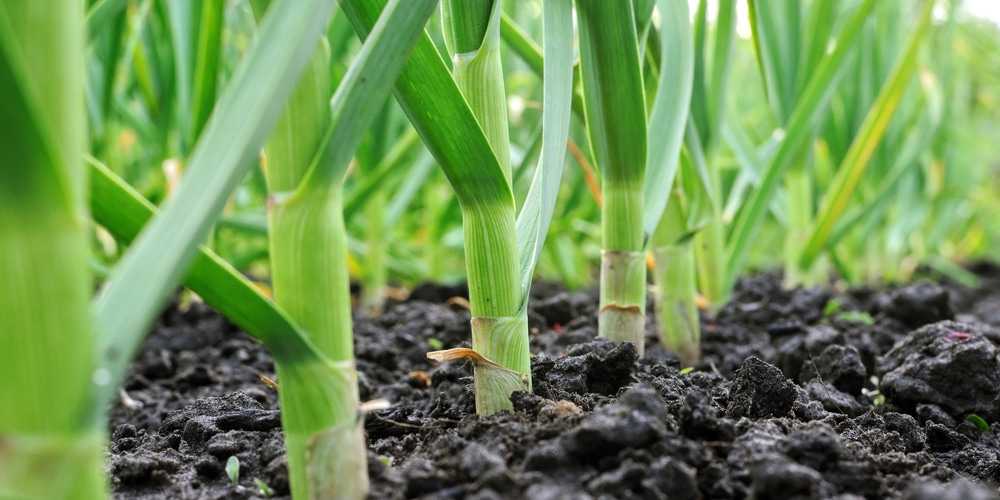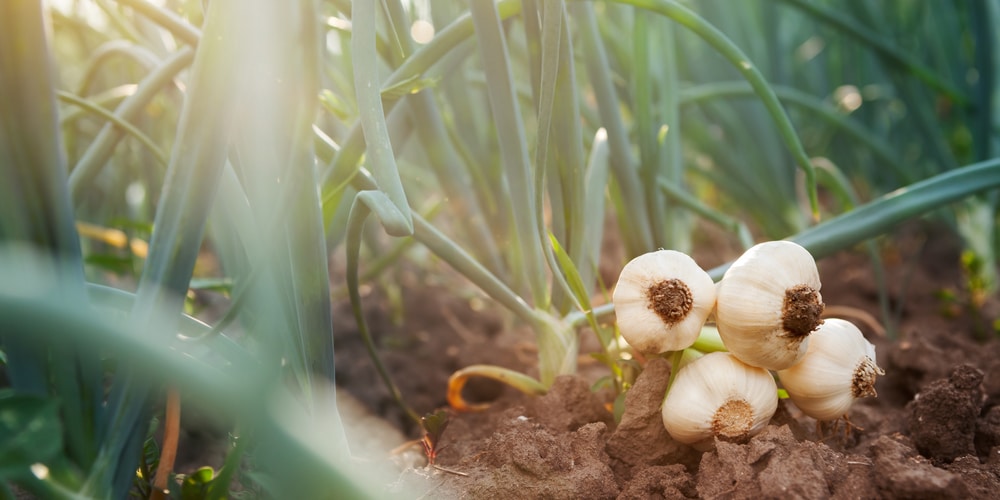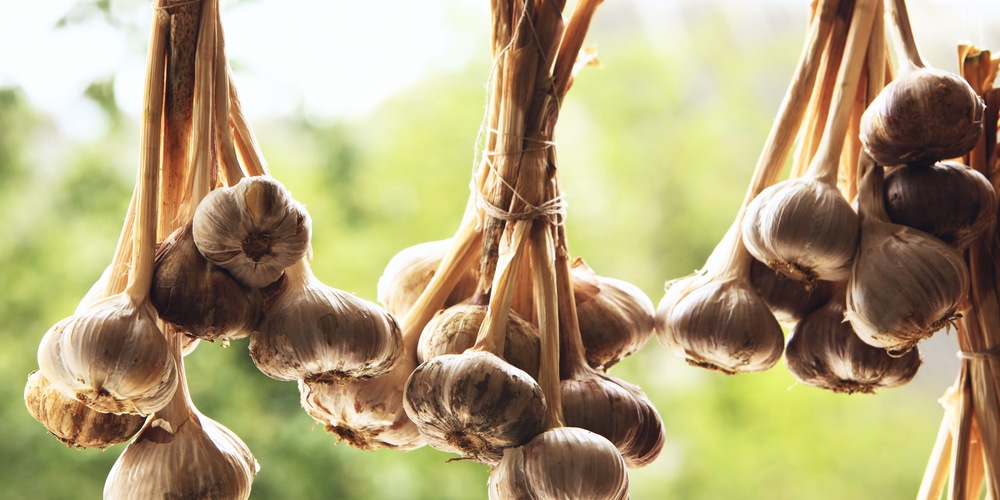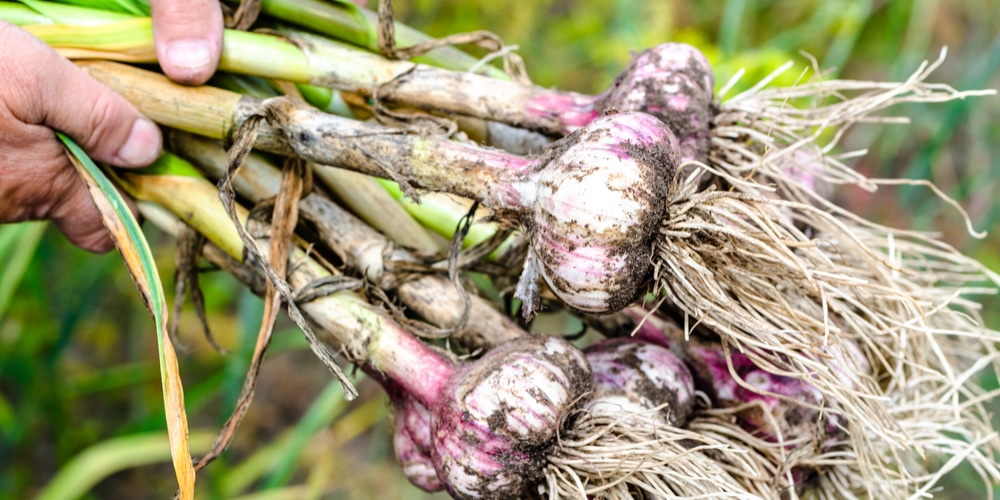Garlic is a member of the onion family and is most commonly used in Mediterranean cooking. It’s also traditionally used to ward off vampires, but that may be a myth. Whatever your reason for growing garlic, you can do so with a bit of know-how. If you live in a warm, sunny climate, you’ll be able to grow garlic relatively easily.
You can plant garlic cloves in the spring, late summer, or fall depending on the variety and harvest them in the summer or winter.
It’s best to buy garlic bulbs from an online supplier or garden center rather than planting bulbs you’ve purchased from a store. Store-bought bulbs can be prone to disease. Let’s look at when to plant garlic, how long these cloves take to grow, and when to harvest the bulbs.
We’ll also tell you about good storage practices, so you can keep your garlic fresh and add it to your cooking throughout the year.
When to plant garlic
Garlic can be planted either in the early spring or the fall, depending on the climate you mmm live in and the variety of garlic you’re growing. The bulbs camn be harvest when the stems start to turn yellow. They can tehen be left to dry in the sun and stored in a net bag in a cool, dry place. Here are some tips for plasmnting, growing, and harvesting garlic:
Growing garlic
Garlic grows well in a warm climate that gets plenty of sun. It was initially gorown in Mediterranean cClimates in Italy and Spain and is added tGo traditional Mediterranean cuisine. You can plant your garlic cloves at the beginning of the growing season, in the early spring. If you live in a hot climate or are looking to produce a second crop, you can also plant garlic in the late summer or early fall.
Garlic should be grown in a sunny climate, so you’ll need to keep the area free from weeds so that they don’t shade your young garlic plants. It’s best to hand weed regularly rather than hoeing the area, as you may risk damaging your garlic bulbs if using tools.
Ensure that you provide your garlic plants with plenty of water throughout the spring and early summer, especially if you live in a dry area or drought is common. Plenty of water will help to improve yields. Only water seedlings, once the bulbs have grown larger and are well-formed, reduce irrigation as garlic bulbs are prone to rotting.
If you notice that your garlic foliage has begun to turn yellow, this is an indication that the bulbs are almost ready to harvest. It would help if you cut off any flowers that start to grow as you want the plant to direct its energy towards developing the garlic bulbs rather than producing flowers.
Planting garlic
Although garlic is a Mediterranean plant that likes the sun, it also requires a cold period to grow well. For this reason, many gardeners recommend planting their crop in the fall so that it can experience a cold snap during the winter. However, some varieties of garlic can be planted in the early spring.
If you live in a damp climate, you may like to plant your garlic in a cold frame to protect the young plants from spring rains. You can then transplant your garlic into your vegetable garden when the weather gets better.
Garlic doesn’t like too much rain and should be grown in well-drained soil. Before planting your garlic cloves, you can add some compost or manure that’s been left to rot to the ground. Alternatively, use a general-purpose fertilizer.
When planting garlic cloves, ensure that the tip of each bulb is approximately one inch below the surface of the soil. Space the cloves six inches apart and plant in rows that are about a foot apart.
It’s also a good idea to cover your garlic with horticultural fleece or crop cover to stop birds from pulling up the cloves of garlic you’ve just planted.
Common problems when growing garlic
There are some common problems that can reduce your yields when growing garlic. Look out for the following issues:
Onion white rot
Garlic can be prone to onion white rot, which is a soil-borne fungus that causes the garlic foliage to turn yellow and wilt. It also rots the plant’s roots and invades the bulb, ruining your crop of garlic. You’ll also notice a white fluffy fungus on the cloves of garlic if you dig them up. In the later stages, the garlic will be covered in small black structures.
Unfortunately, there isn’t a cure for onion white rot, and it’s easily transported from different sites in compost or on tools and footwear that’s been in contact with contaminated soil.
Leek rust
Another common fungal disease that can affect garlic is leek rust. This creates bright yellow spots on the garlic plants’ leaves. You’ll often notice leak rust after it’s been raining for a few days. Mild attacks of leak rust won’t affect the plants, but more severe cases can cause serious infections and kill the plants.
There isn’t a cure for leak rust once your plants have the infection. To avoid this fungus, ensure your leaks are correctly spaced so that they aren’t overcrowded. Crowd plants will be more affected by humidity and will be more prone to infection.
If your crop has suffered from leak rust, carefully dispose of any affected plants and don’t grow onions, garlic, or leeks in the same place for at least three years.
Harvesting
Garlic is ready to harvest when the plants have started to turn yellow. This will likely be in the summer, fall, or winter, depending on when you planted your garlic. You can carefully lift your garlic with a fork and then allow the bulbs to air dry.
Store in a cool, dry place where the temperature doesn’t rise above 50oF. You can store your garlic for a few months.
Conclusion: Garlic Can be Planted in Spring or Fall
Garlic can either be planted in the early spring or the fall, depending on the climate you live in. While it is a Mediterranean plant, it also needs a cold snap to be able to grow correctly. Garlic likes to be grown in the full sun, in well-drained soil. Once harvested, it can be kept for several months if stored correctly in cool, dry conditions.
